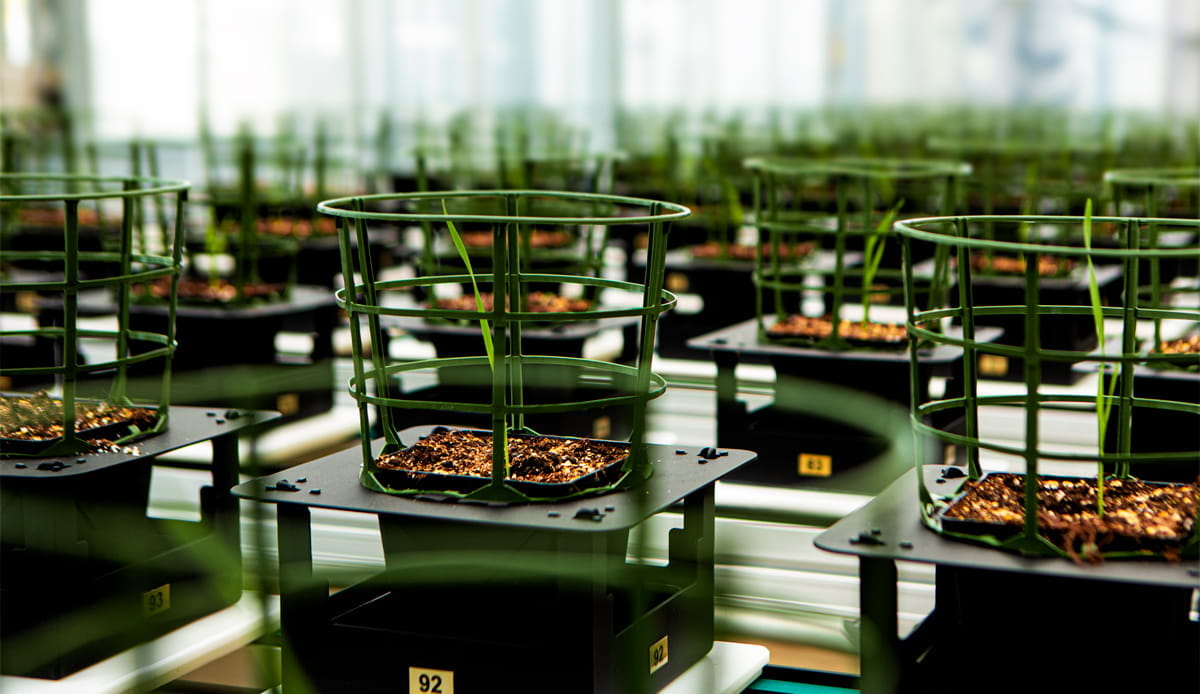Before our products can reach the field, they first need to be tested in the laboratory. Central to this is determining the effects of various bacteria on a range of crops in the greenhouse under controlled conditions.
A particularly effective way of achieving this is by using plant phenotyping – that is, observing the physical characteristics of a plant such as such as height, biomass, leaf shape and so on. To do this, the Plant Health team use an automatic phenotypic unit in one of our greenhouse facilities.
The system encompasses a conveyor and transporter where up to 1,000 plants can be monitored, watered and weighed before being sent to a photo chamber where a combination of advanced fluorescent imaging and RGB cameras measures the plants’ response to such factors as heat load, stresses and water deprivation.
By examining the performance of the plants under given conditions, the system allows us to find the best bacteria to provide optimal plant growth development and the best resistance to towards biotic and abiotic stress.
Ultimately the system allows a larger number of different bacteria strains to be tested efficiently and quickly by replicating the conditions that are happening in the field.
“Screening helps speed up the process of seeing which bacteria work."
Thomas Vain, PSI Program Manager, Chr. Hansen Plant Health

